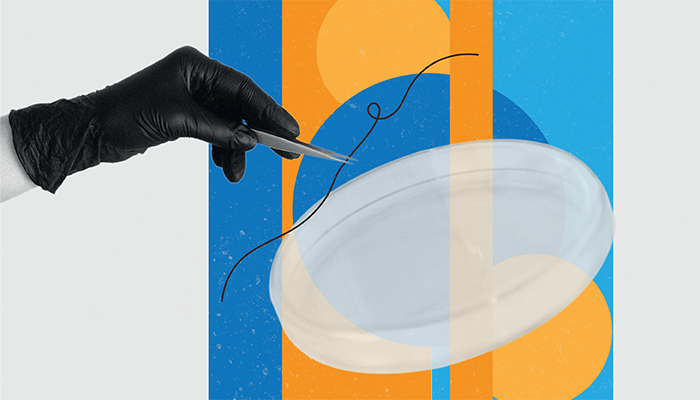The gene therapy analytical toolbox grows. Researchers from StrideBio in North Carolina, USA, have developed an optimized method using size exclusion chromatography (SEC) with UV and multi-angle light scattering (MALS) to measure empty capsids in the gene therapy manufacturing process. The SEC-MALS method outperformed droplet digital PCR (ddPCR) with capsid enzyme-linked immunosorbent assay (ELISA) and cryogenic electron microscopy, and correlated well with sedimentation velocity analytical ultracentrifugation (SV-AUC) values of full-to-empty particles. “This work indicates that SEC-MALS is a valuable analytical tool in the analytical development and QC testing of AAV,” wrote the authors.
Beds of beads. A study from researchers in Belgium and the Netherlands has shown that the placement of spherical particles in pockets forming microgrooves can act as perfectly aligned chromatographic columns. Whether stacked in a multi-layer column or positioned individually in a single-layer column, the design gives the microgrooves a mechanism for correcting velocity differences. Further research will i) explore removal of occasional particles that remain on the sides of the micro-pockets, sealing the column, and ii) perform actual separations using the columns.
Rats on drugs. The application of liquid chromatography-mass spectrometry (LC-MS) to three different types of rat brain tissue samples has been the first study of its kind to delve into the neurological effects of cocaine and ethanol consumption. The researchers measured the levels of endogenous compounds present in different brain regions (prefrontal cortex, striatum and hippocampus) in male and female rats, and found that metabolic purine and pyrimidine pathways and their functions were altered with self-administration. Female rats were found to be more sensitive to metabolic changes.
Bronze Age party. Researchers at the Valladolid University in Spain have discovered human hair dating back to the Late Bronze Age found in archeological excavations in Menorca, Spain. Hoping to learn more about our West Mediterranean ancestry, they analyzed the hair strands with ultra-high-performance liquid chromatography-high resolution mass spectrometry (UHPLC-HRMS). The analysis showed direct evidence of ancient communities in the Western Mediterranean consuming alkaloid-bearing plants that contained multiple psychoactive species – as early as 3,000 years ago.

Liquid chromatography-tandem mass spectrometry analysis reveals that the acrylamides and protein-bound ceramides in mice are vital in forming their oral barrier – protecting them from infection. Link
Ion chromatography provides researchers with answers about the degradation of plasticizer in plastic explosives – concluding that temperature control quickens the process. Link
Gas chromatography-mass spectrometry/flame ionization method identifies compounds in a traditional medicine plant that could be used to combat malaria. Link
A new adaptable end-column platform reduces pressure and improves efficiency and sensitivity – making it a versatile tool to improve high-performance liquid chromatography (HPLC) separations. Link




